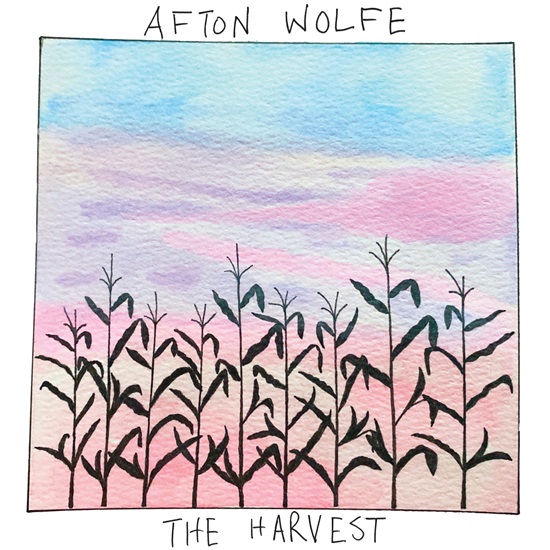
If anything’s predictable about the work of Afton Wolfe it’s the unpredictability. He has such a wide range of references and influences that you never know what’s around the next corner. The first surprise about ‘The Harvest’ is that there are no Afton Wolfe originals. The second surprise is that all of the songs are written by his father-in-law L.H. Halliburton so the album’s all about performance and interpretation of someone else’s songs, bringing all of his influences into play. Afton’s gravelly baritone serves all seven songs on this project perfectly the slightly sinister ‘Hello, Mr. Wolf’ – more about that later.
The album opens with ‘The Harvest’ which bounces along with hints of Van Morrison’s ‘Bright Side of the Road’ to put forward the idea that the year should begin in the fall with the harvest, rather than in spring with the sowing. ‘New Orleans Going Down’ has an unsurprising Dr John feel with the full band (including piano, of course). The vocal delivery echoes the rising of the flood water, becoming more impassioned with each chorus as the water levels become more dangerous. The next two songs get to the heart of Afton Wolfe; if you threw the DNA of Bob Seger and Tom Waits in a blender, you would get something close to Afton Wolfe vocally and stylistically.
The gospel-tinged ‘Lost Prayers’ with piano and fiddle fills evokes the classic mid-tempo Seger song, while ‘Hello, Mr. Wolf’ with its gruff spoken lyric and its off-kilter sparse arrangement and comparison of the wolf with human animals echoes Tom Waits at his most raw. The next two songs both look back in terms of style. ‘Till the River No Longer Flows’, with its message of persistence in the face of adversity has a big Southern rock sound in the good old Lynyrd Skynyrd style, including the obligatory extended guitar solo to the finish. ‘Mississippi’ has Afton exploring his soul/Stax roots with horns and piano triplets as he delivers L.H. Halliburton’s message to the state that mirrors Neil Young’s seventies message to Alabama. The album closes with the very lo-fi ‘Here to Stay’ exploring loneliness over a stuttering, reverbed piano backing saturated with tape hiss. It’s very evocative, bordering on disturbing.
‘The Harvest’ is an interesting project. Afton Wolfe doesn’t shy away from covers and interpretations, but covering seven songs by the same writer is a different challenge altogether and he absolutely aces it with his usual variety of styles and distinctive vocal delivery. Whatever Afton Wolfe tackles, you know it’s going to be interesting.
‘The Harvest’ is out now on Grandiflora Records.
Here’s the official video for ‘Lost Prayers’:
![]() So what makes the perfect festival? A line-up of artists that you really want to see, obviously, but maybe I’m approaching this from the wrong direction. There are many, many aspects of festivals that fill me with dread, including sanitation (or lack of), over-priced food and drink, the great British weather and big one; camping, glamping or whatever you favour in the area of al fresco sleeping. Now if there was a festival where I had the choice of loads of interesting gigs and the option of curling up in your own bed after a nice shower, that’s the one I’d be going for. Now, as it happens, there’s something closely resembling that happening in London this year, for the second time, going by the name of Innervisions Festival promoted by the APMG group.
So what makes the perfect festival? A line-up of artists that you really want to see, obviously, but maybe I’m approaching this from the wrong direction. There are many, many aspects of festivals that fill me with dread, including sanitation (or lack of), over-priced food and drink, the great British weather and big one; camping, glamping or whatever you favour in the area of al fresco sleeping. Now if there was a festival where I had the choice of loads of interesting gigs and the option of curling up in your own bed after a nice shower, that’s the one I’d be going for. Now, as it happens, there’s something closely resembling that happening in London this year, for the second time, going by the name of Innervisions Festival promoted by the APMG group.
The line-up features an impressively varied list of artists including Van Morrison, Mavis Staples (supported by the wonderful Stone Foundation), Maceo Parker, Fela Kuti, Gilberto Gil, Gentleman’s Dub Club, Janet Kay and Carroll Thompson playing at a range of venues including Under the Bridge, The Roundhouse, Islington Assembly Hall, Shepherd’s Bush Empire, Indigo at the O2 and Earth between Wednesday July 3rd and Sunday July 7th.
You can see the full updated line-up and links to ticket sales on the Festival website. Here’s how it’s looking at the moment:
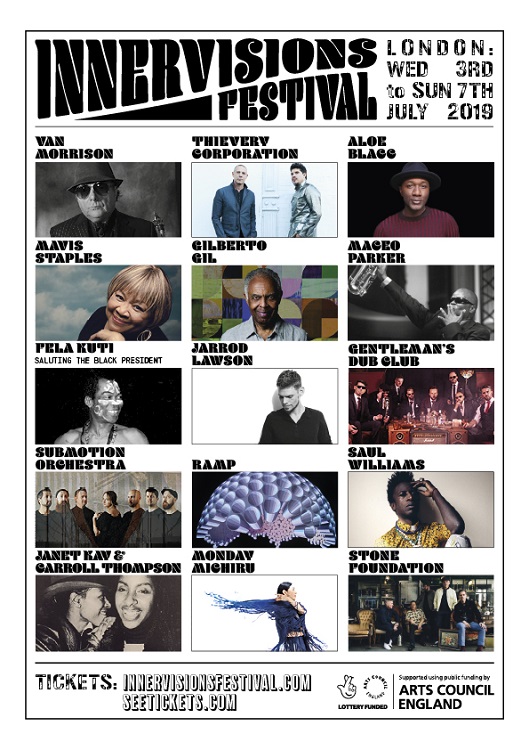
So if you’re a fan of any of the artists on this line-up grab yourself a ticket or two for any of the gigs, arrive at a reasonable time, leave the wellies at home, enjoy the gig and then get the tube home to a nice comfortable bed and wake up the next day feeling refreshed and without the prospect of a mile-long cue for a tepid shower. Just sayin’.
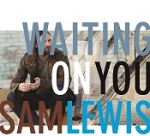 It’s not particularly unusual to find an artist whose work is difficult to pin down to one genre. It’s pretty common to hear of artists mixing blues and country or blues and soul, but Sam Lewis goes the whole way, weaving elements of blues, soul and country into the texture of his songs on his second album, “Waiting on You”. The album was recorded at Nashville’s Southern Ground with a cast of players which included Will Kimbrough (the go-to guitar-slinger for Riot Squad favourite Dean Owens), Darrell Scott, Mickey Raphael, Gabe Dixon and The McCrary Sisters and the combination of a live recording philosophy and absolute top quality players creates a flawless and seemingly effortless backdrop for the songs and Sam’s smooth, soulful voice.
It’s not particularly unusual to find an artist whose work is difficult to pin down to one genre. It’s pretty common to hear of artists mixing blues and country or blues and soul, but Sam Lewis goes the whole way, weaving elements of blues, soul and country into the texture of his songs on his second album, “Waiting on You”. The album was recorded at Nashville’s Southern Ground with a cast of players which included Will Kimbrough (the go-to guitar-slinger for Riot Squad favourite Dean Owens), Darrell Scott, Mickey Raphael, Gabe Dixon and The McCrary Sisters and the combination of a live recording philosophy and absolute top quality players creates a flawless and seemingly effortless backdrop for the songs and Sam’s smooth, soulful voice.
There’s nothing remotely flashy about this album but equally, there isn’t a note or lyric out of place in this atmospheric evocation of a life lived at a less frantic, more relaxed pace. The opening song, “3/4 Time”, sums this up; it’s not about a ¾ time signature, it’s about taking life at a canter rather than a gallop and appreciating your surroundings. From here on in, the album moves through a variety of styles, from the early Van Morrison feel of “Love Me Again” and the slow blues of “She’s A Friend” through the blues shuffle of “Things Will Never Be the Same” and the country blues of “Reinventing the Blues” to quiet contemplation of the finger-picked “Never Again”. It’s all gorgeously listenable and it’ll leave you with a warm glow of satisfaction.
Towards the end of the title song, Sam pushes towards the top end of his range and sounds a lot like Al Green; it’s just one of many examples of a superb voice finding the last ounce of emotion in the song and sharing it with us. Three songs towards the end of the album are perfect examples of Sam’s laconic songwriting and singing style. “Texas” is the story of a man going back to Texas after a relationship fails, although the twist is that the failure happened because, in his mind, he never actually left Texas, while “Virginia Avenue” is a musical snapshot of life in Anywheresville, USA. The closing song, “I’m Coming Home” is as close to anthemic as we get, with an uplifting message and a sound that’s reminiscent of The Band, and that always has to be a good thing.
“Waiting on You” is an album that’s packed full of musical quality; Sam Lewis has an astonishingly good voice and he’s surrounded himself by quality musicians who provide a classy backdrop for his gently evocative songs. It’s a cracking album.
“Waiting on You” is out now on Brash Music (BRH0093-2).
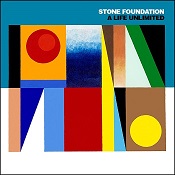 It’s always a good feeling when a band or artist you like starts to get a bit of recognition, particularly when you know they’ve put in the hard hours over a long period of time and they’re doing something that they believe in and they’re committed to body and soul. In 2014, things were finally starting to happen for Stone Foundation. After years of serious graft with no industry backing, playing support slots, organising their own tours and self-funding their releases, people started to take notice and they got a bit of radio exposure (Craig Charles helped a bit there). They did support tours with The Selecter and The Blow Monkeys and the album “To Find the Spirit” made a dent in the independent charts; even The Modfather was photographed holding a copy. So, where to next?
It’s always a good feeling when a band or artist you like starts to get a bit of recognition, particularly when you know they’ve put in the hard hours over a long period of time and they’re doing something that they believe in and they’re committed to body and soul. In 2014, things were finally starting to happen for Stone Foundation. After years of serious graft with no industry backing, playing support slots, organising their own tours and self-funding their releases, people started to take notice and they got a bit of radio exposure (Craig Charles helped a bit there). They did support tours with The Selecter and The Blow Monkeys and the album “To Find the Spirit” made a dent in the independent charts; even The Modfather was photographed holding a copy. So, where to next?
Well, the next album, “A Life Unlimited”, is out on August 7th, so that’s a pretty good place to start. It would have been so easy to stick with the style that made “To Find the Spirit” successful, but that’s not what these guys do; the new album was always going to move in a slightly different direction, particularly after a few of the personnel changes that are almost inevitable in a large group.
The opening song, “Beverley”, (the theme tune from Alexander Thomas’ short film of the same name) is a tantalising hint as to the slight change of direction. It could almost be a track from the previous album, apart from the congas (courtesy of new member Rob Newton), which infuse a little Latin spirit into the funky cocktail of horns, Hammond and wah-wah guitars. There’s a change of emphasis in the brass section as well; Gareth John filled the trumpet vacancy last year and Adam Stevens has come in on baritone sax to replace trombonist Spencer Hague while he takes a break, both joining long-standing tenor saxophonist Gary Rollins. It gives the brass section a more Stax/Atlantic feel with a greater focus on ensemble playing as opposed to solos. It’s a philosophy which applies to the band generally; Stone Foundation is about eight guys working together to create gorgeous grooves and it works because the egos are reined in and the band is more important than the individual.
The sumptuous ballad “Pushing Your Love”, with harmonies from The Four Perfections, wouldn’t have sounded out of place on the previous album, while “Something in the Light” takes a little step forward with the brass section, particularly Adam Stevens’ baritone lines, generating a Memphis Horns feel and the Q Strings adding a touch of velvet to the sting of brass. And that’s all before the Van Morrison-style breakdown with strings, tenor sax and backing vocals from The Four Perfections and Janet and Samantha Harris. Lovely stuff.
“The Turnaround” and “Learning the Hard Way” are real departures for the band. The horn fills have a New York/Cuban feel which weave around Neil Sheasby’s bubbling bass lines and Neil Jones’ guitar to create a sound which is much more New York fusion than small town soul; the kind of thing Southside Johnny and his brass section The New York Horns have been doing so well recently. They’re both irresistibly funky.
It’s the two centre pieces (or the last track on side one and the first on side two if you’re going for the vinyl) which give the clearest indication of the new influences on this album; there’s a bit of jazz in the mix. “Speak Your Piece” is a sprawling epic of a song which starts with handclaps, a piano motif (which is picked up later by the horns) and a five-note bass riff which runs through the song. Even as the song builds and layers are added, there’s always plenty of space in the mix; it never feels crowded as it builds up to a noisy chorus and drops back to piano and bass under the lead before building up again to big horn-driven finale. There’s even a one-note piano solo from Ian Arnold, and if that isn’t jazz, I don’t know what is. “The Night Teller” has a mid-tempo cool jazz feel evoking the cover artwork of Donald Fagen’s classic “The Nightfly” album and features a guest vocal by Graham Parker underpinned by some understated baritone sax. It’s all beautifully played and GP’s vocal works perfectly as a complement to the voice of Neil Jones. “These Life Stories” is a mid-tempo groove built around some laconic brass ensemble playing and delicate electric piano and it’s another example of the ‘less is more’ philosophy; you don’t need flash when a band can play this well together. Even the conga solo is politely restrained.
“A Love Uprising”, the album’s penultimate track, opens up like a 1990 house tune with a simple piano riff and Philip Ford’s four-to-floor kick drum but, within a few bars congas come in to soften the beat before seventies hi-hats and funk guitar, and then brass fills morph the piece into classic New York disco. And who’s that coming in just before two minutes with a rap? It’s Dr Robert from The Blow Monkeys making a guest appearance. Just to add to the Studio 54 ambience, you even get congas and disco whistles; it’s so authentic they knocked back Nile Rodgers when he tried to get in to the session. The closing track “Old Partners, New Dances” is an instrumental piece featuring Ian Arnold on piano and Gareth John on flugel horn, evoking the feel of a jazz club at four in the morning and it’s perfect way to bring the album down for a soft landing after the manic buzz of “A Love Uprising”.
Since the sessions for “A Life Unlimited”, the band has signed record deals in Japan (with P-Vine Records) and the USA (with Spectra Music Group); things definitely aren’t standing still at the moment and, with this album, they probably have the right set of songs to break through. What shines through every aspect of the album is quality; the songs are well-crafted, the arrangements are sensitive and varied and the performances are all superb. Even the artwork by Horace Panter (you are going to buy it on CD or vinyl, aren’t you?) is spot on. Maybe “A Life Unlimited” proves that, in a world where a Glastonbury headliner gets away with out-of-tune karaoke, there’s still room for music created with passion and talent.
“A Life Unlimited” is released on August 7/ 2015.
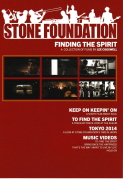 It’s been a busy year for Stone Foundation. The album “To Find the Spirit”, released independently in March 2014, made a significant impact on the indie charts as the band’s live following increased with their own gigs in Europe and Japan and support slots with The Selecter and The Blow Monkeys. With radio support from Craig Charles on 6 Music and endorsement from the Modfather himself, things have been looking pretty good for the band this year. So, how do you keep that momentum going? Well, a few gigs with soul legend and SF collaborator, Nolan Porter, and a DVD as a more permanent memento, would probably do nicely. The gigs have come and gone and the DVD, “Finding the Spirit”, was released on 21 July.
It’s been a busy year for Stone Foundation. The album “To Find the Spirit”, released independently in March 2014, made a significant impact on the indie charts as the band’s live following increased with their own gigs in Europe and Japan and support slots with The Selecter and The Blow Monkeys. With radio support from Craig Charles on 6 Music and endorsement from the Modfather himself, things have been looking pretty good for the band this year. So, how do you keep that momentum going? Well, a few gigs with soul legend and SF collaborator, Nolan Porter, and a DVD as a more permanent memento, would probably do nicely. The gigs have come and gone and the DVD, “Finding the Spirit”, was released on 21 July.
So let’s just rewind a little bit here; Stone Foundation is a bunch of guys from the West Midlands (an area more renowned for heavy metal, to be honest) which formed around the nucleus of Neil Jones (guitar and vocals) and Neil Sheasby (bass and backing vocals) around ten years ago and developed into a classic soul/r’n’b lineup (and by r’n’b I mean Stax and Atlantic, not Jay-Z and Beyonce) with the addition of drums (Philip K Ford), Hammond organ (Ian Arnold), sax (Gary Rollins), trombone (Spencer Hague) and trumpet and latest recruits trumpet (Gareth John) and congas/percussion (Rob Newton). Stone Foundation operates completely outside what’s left of the mainstream music business. On the band’s website, the imagery of the biography is equal parts gang/team and an almost religious evangelism; if you’re thinking early Dexys and The Clash here, then you’re pretty much on the money. Personally, I’m more drawn to the idea of a collective than a gang; the band’s a very tight unit, but they find like-minded contributors outside the unit willing to help promote the manifesto, including writer Paolo Hewitt, Specials’ bass player Horace Panter (who contributed the artwork for “To Find the Spirit”), and videographer Lee Cogswell.
Lee has put together “Finding the Spirit” (described as “a collection of films”) which pulls together various strands of the band’s work over the last few years, combining music videos, a documentary of the 2012 collaboration with Nolan Porter (“Keep On Keepin’ On”), a track-by-track exploration of “To Find the Spirit” with Neil Jones and Neil Sheasby, and a record of Stone Foundation’s 2014 Japanese tour (“Tokyo 2014”).
“Keep On Keepin’ On” mixes interviews with the two Neils and Nolan Porter with live footage from The Musician in Leicester and London’s 100 Club and some lovely studio footage of the recording of Van Morrison’s “Crazy Love” featuring Nolan’s lead vocal; it’s a familiar (but still welcome) story of an artist whose career has been resurrected by the UK Northern Soul scene, but this time with some help from contemporary musicians. The film captures the relationship between Nolan, the band, and their collective audience perfectly, particularly in the footage from The 100 Club.
The track-by-track breakdown of “To Find the Spirit” is enlightening and informative; the interviews with Neil Jones and Neil Sheasby give a genuine insight into the way the album came together while emphasising the part played by fate or the collective spirit. The cameos played by Carleen Anderson and Andy Fairweather-Low were arranged through friends of friends, “Don’t Let the Rain” started with a bass riff and a string sound from Ian Arnold’s new keyboard, and the original inspiration for the album and the song “Child of Wonder” came from a prose piece by Paolo Hewitt. It’s surprising to hear that there were question marks over whether “Crazy Love” had a place on the album; thankfully, common sense prevailed there.
“Tokyo 2014” is a collage of impressions from the brief Stone Foundation Japanese tour earlier this year superimposing quick clips of the band meeting their fans over a live soundtrack which includes a particularly raw version of the Booker T and the MGs classic “Time is Tight” by a Japanese band called The Tramp. The technique of using quick cuts between short video clips conveys the feel of continuous motion while the entire piece emphasises the devotion of the band’s Japanese fans.
The final section of the DVD is a compilation of Lee Cogswell’s videos for the songs “To Find the Spirit”, “Bring Back the Happiness”, “That’s the Way I Want to Live my Life” and “Hold On”. “To Find the Spirit” opens with a quick reference to the Dexys debut album, “Searching for the Young Soul Rebels” as the lead character tunes across the static of a radio dial before leading into an aspirational story which is shot through with visual and audio Stone Foundation references. “Bring Back the Happiness” plays under a father/son reconciliation story featuring Andy Nyman (who featured in the hilarious Channel Four show “Campus” and “Peaky Blinders”) and newcomer Ben Finlay, who was spotted dancing at a Stone Foundation gig. “That’s the Way I Want to Live my Life” is a very clean black and white (and silhouette) video of the individual band members featuring multi-screen effects, and “Hold On” is a fairly straightforward studio piece featuring Andy Fairweather-Low guesting on backing vocals. You can have a look at the videos here.
By any standards, this is a very high quality piece of work; if you take into account the fact that this venture has no music business backing, then it’s absolutely exceptional. Lee Cogswell has worked across a variety of styles, including documentary, interviews, live footage, reportage and music video to produce a cohesive piece of work which enhances his own reputation while documenting the rise of a band with an absolute commitment to fulfilling its own agenda. It’s more than a just a souvenir, it’s a lovingly-crafted insight into the workings of a group of people who are making music for all the right reasons. The band is also appearing in a special session recorded for the Craig Charles funk and soul show on BBC 6 Music this Saturday (August 9).
This DVD is worth buying for its musical and visual quality, but also because the people responsible for the creative input actually see some financial reward for their efforts.
Out now. Available from Lee Cogswell.
Phil Burdett’s album, “Dunfearing and the West Country High” was reviewed here earlier this year and ever since that time I’ve been waiting for the chance to sit down and have a chat with Phil about his music (and many other things). We finally managed to meet up in Leigh-on-Sea on typically miserable British Bank Holiday weekend and had a pretty expansive chat over a couple of beers. Now that’s the way to do an interview. We covered a lot of ground, so the interview is being published in parts over the next few days.
AM – So Phil, tell us a bit about how you got to be where you are now, musically and philosophically.
PB – I take it you don’t mean the bus route down here. That’s a very good opening question and I’ll do my best to answer it. Musically I would say it’s incremental; it started off with my brother when I was five years old with a guitar and my brother Mick used to have a record collection and he’d lend me his older albums and he was one of those part-time hippies in the late sixties. He went to the Isle of Wight Festival, credit for that, and he had loads and loads of folk music and blues music which was all I heard. Everyone at school was into glam rock and everything so I used to have endless school parties when I was older (obviously not when I was five; great progressive school that would have been). All I would listen to was John Fahey, John Renbourn and probably a bit of the West Coast Neil Young, Topanga County kind of people, James Taylor and those sort of things. And I thought great, this is what’s in the charts, this pop music, then I got school and it was Marc Bolan which was fabulous; I didn’t quite reject everything of my brother’s but I thought, this is what I’m meant to be listening to so I suppose in the early times it was a mixture of Marc Bolan and John Renbourn and then my brother expanded as well into other things like The Band and Van Morrison. Actually, I saw Van Morrison first, although he will tell you different, but I saw him on the Old Grey Whistle Test when he did the “Too Late to Stop Now” thing and they broadcast the whole thing live when they used to do those things, in those days, and I just thought it was music from another planet; I’d never heard anything like it. He had a string section, he had a horn section, he was doing soul music, he was doing blues music, he was doing folky stuff and I can remember a shift happened in my head and I thought ‘this is what I want to do’, and that’s when I wanted to write songs. Not so much to write songs, ‘but I want to make this noise, not to play “Caravan” or “Brown-Eyed Girl”; I want to make this noise with these people. I want to have a bunch of people like this behind me and I want to make this noise.’
AM – Was it the variety of instruments that drew you to it?
PB – It was and, in retrospect, I was quite pleased with that because it was just such an astonishing surprise sometimes you go along to a gig, and you know two numbers in what you’re going to get, whether you like it or not. I like the idea that suddenly you don’t know what’s going to happen next; this could be a folk song, he could pull an acoustic guitar out, he could pull a set of bagpipes out. It could be anything; it could be heavy metal and I loved the idea of that and people like Captain Beefheart. Frank Zappa took it to extremes but I used to love Zappa and probably all the people I’ve liked since that, I’ve liked because of that gig where you thought that anything was possible. You see it now and it flows and it seems like a very good and expansive band playing but at the time I thought that one minute it was classical music, the next minute it was folk music and that’s what I liked it was the variation that made it a whole; it hung together because of the variation. It was astonishing; I sat up after it and I just didn’t know what to do. I wanted to everything but couldn’t do anything.
AM – You mentioned a couple of the musical mavericks there; is there something in you that taps in to that?
PB – I think it all came from that Van Morrison show. Now, I slag off Van Morrison more than anyone does because I think he’s become an appalling thing, an appalling great lump of Irishman. I would rather go and see, and I don’t say this lightly, I would rather go and see a Van Morrison tribute band now than see Van Morrison because it’s the same thing essentially; I think he’s lost the plot or never had the plot and got lucky. His first four or five albums up to “Veedon Fleece” and a little bit beyond were fantastic but suddenly it all went very wrong. When he was inventive and varied, which was probably before I got in to the idea of lyrics, and that’s evolved more than the music side, he was just purely making music and making sounds for the joy of it; I think Van Morrison expresses that if I don’t care about lyrics, because he’s not the greatest lyricist in the world, it’s perfect. “Astral Weeks”, it’s errant nonsense a lot of it but you couldn’t change a word of it. What the fuck is “Veedon Fleece”? What is a Veedon Fleece? But you wouldn’t want it any other way. I’m not religious, I’m an atheist, but I believe that; I want to go and search for the Veedon Fleece when I’m hearing that, so it works. It was that combination of trust in him, you believed in what he did, and his voice, which was peerless at that time. I used to try to do the Van Morrison bit with a bit of Bob Dylan thrown in. My brother tried to get me into Bob Dylan more and I said that Van Morrison was the man, and then suddenly the thing that changed it was Bob Dylan and Robbie Robertson. I heard The Band’s first album and, for no reason whatsoever, I just loved and then I realised that the reason I loved it was because of these words. It’s not the way they were being sung, although that was fabulous, it was these words and I didn’t know what they meant, but they sounded like they meant something and it was probably a combination of those things; Dylan, the Band and Van Morrison.
AM – I was going to come to this a bit later, but the first time I listened to “Dunfearing and the West Country High” I pulled the lyric booklet out and it was obvious that there were an awful lot of lyrics there.
PB – I get hell from record companies for that, especially from the people that type the lyrics out.
AM – But it was doing that and actually reading the lyrics that I realised you’re obviously a writer who is influenced by poetry as well.
PB – In a way, poetry came before lyrics because I used to like poetry before music. When I first heard music, the lyrics were part of the music, of the sound. They could have been singing anything and in some cases they were. People talk about Nick Drake, but I think Nick Drake’s a terrible lyricist. I’ll get crucified for this, but if his music and his sound wasn’t as good as it is, if musically he was someone like Donovan, then the lyrics aren’t that different; it becomes mystical because of the setting rather than the content.
AM – What struck me as well is that the lyrics on “Dunfearing…” actually repay careful listening.
PB – That’s what you want. That’s the reason I want to write short stories, I want to write books, I want to write everything, but I’m writing this music because it’s the only thing I can see, outside of opera, that’s taken seriously (not seriously enough, in my opinion) because it’s a combination of music and lyrics that would not work separately. I’m not a great lover of the idea that lyrics are poetry; I think lyrics are lyrics but they can be good lyrics. Poetry’s another thing; poetry should be able to stand alone. If you have as good a lyric as “Idiot Wind” and Bob Dylan wanted to do that as a poem, I think he would rewrite it, but he shouldn’t rewrite it; it’s got to complement the music.
AM – For the first time in years listening to a new album, I went into sixth form English Literature criticism mode.
PB – My album will be on the curriculum next year; I trust Gove.
AM – You’ve seen the review, it got that reaction because there was so much in there lyrically.
PB – Your review astonished me; my first reaction was that I thought it was a wind-up and that Phil Pavling (described in the sleevenotes as guru and benefactor) had written it or I thought I’d written it and forgotten and posted it to myself. You don’t get that often, you think ‘That’s nice, we’ll use that line for a plug or something’, but this was almost like you knew as much as I did about what was going on, which is very rare.
AM – That was just my natural reaction to the album, really. The other thing was that my wife, who wouldn’t necessarily have chosen to listen to it, being much more into disco, gave it a big thumbs up as well.
PB – My disco album will come a lot later.
And that’s end of part one, more to come very soon, when we get into punk, post-punk and post-post-punk, among other things.
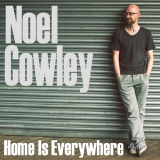 Well, it’s not even halfway through January yet and this is the second very, very good single I’ve reviewed. Noel Cowley is a singer-songwriter with roots in Derry, Dublin and London and the songs and arrangements on this EP are in a tradition that extends back to the highpoint of the genre in the 70s. Noel recorded these songs (co-written with his brother Ewan, who also plays piano and guitar) in Manchester with some help from Paul Burgess (10CC) on drums and Tracey Browne on backing vocals.
Well, it’s not even halfway through January yet and this is the second very, very good single I’ve reviewed. Noel Cowley is a singer-songwriter with roots in Derry, Dublin and London and the songs and arrangements on this EP are in a tradition that extends back to the highpoint of the genre in the 70s. Noel recorded these songs (co-written with his brother Ewan, who also plays piano and guitar) in Manchester with some help from Paul Burgess (10CC) on drums and Tracey Browne on backing vocals.
The songs on this EP are moving and introspective, from the opener “If Nobody Told You” with its positive advice to be yourself set against a band arrangement with strings, to the closing song “Station Road” with its sparse acoustic guitar arrangement and Van Morrison-like childhood reminiscences. The two central songs, “Wherever I Go” and “Sunday on the Quay”, are perfect in every way, from the nostalgic lyrics to the powerfully catchy choruses delivered in Noel’s strong, clear tenor voice, which has a strong feel of Iain Matthews, a long-time favourite of mine.
If you want an antidote to the instant stardom, X-Factor pap that clogs up the charts at the moment, then you could do a whole lot worse than listen to this. There’s no over-the-top production, no clever samples, just songs that stand up on their own with very simple, even basic, arrangements played on real instruments; what a great start to the year.
Release date January 14th, 2014
 Tricky’s debut album “Maxinquaye” came out in 1995 and is now, some eighteen years later, regarded as not only his best work, but also one of the most inspirational and best examples of the trip-hop genre which first appeared in the early nineties. The pressure for him to repeat the success and the sounds contained on “Maxinquaye” seem to have been so great that Tricky has actually stated that this, his tenth album, (I know, it shocked me too) is a return to the essence of his debut and also of him as an artist. This doesn’t sound like the successor to “Maxinquaye” in that an updated version would have to be terrifyingly experimental and claustrophobic, sticky and dark, but “False Idols” is soulful, mature even and the predominant feminine psyche (something which Tricky has always been very much in touch with in both his music and the images that have accompanied it) is represented and presented as vulnerable and maybe damaged but wilful and intact.
Tricky’s debut album “Maxinquaye” came out in 1995 and is now, some eighteen years later, regarded as not only his best work, but also one of the most inspirational and best examples of the trip-hop genre which first appeared in the early nineties. The pressure for him to repeat the success and the sounds contained on “Maxinquaye” seem to have been so great that Tricky has actually stated that this, his tenth album, (I know, it shocked me too) is a return to the essence of his debut and also of him as an artist. This doesn’t sound like the successor to “Maxinquaye” in that an updated version would have to be terrifyingly experimental and claustrophobic, sticky and dark, but “False Idols” is soulful, mature even and the predominant feminine psyche (something which Tricky has always been very much in touch with in both his music and the images that have accompanied it) is represented and presented as vulnerable and maybe damaged but wilful and intact.
This is a fifteen song album and only “Passion of the Christ” features Tricky on his own with no female support and probably sounds exactly as you might imagine it would. There are three female vocalists featured here and the one male guest is the lead singer of The Antlers singing a version of one their own songs. The women here sound and sing like Martina Topley-Bird, not featured here, who performed vocals on Tricky’s first four albums and is rightly considered his ultimate collaborator and muse. “Maxinquaye” was a sample heavy album and Tricky has demonstrated a continued greed for bizarre cover versions (the “Wonder Woman” theme, “Slow” by Kylie, “The Love Cats” and “Happy Talk” amongst others all appear on previous albums) which hasn’t diminished here but these are his most successful interpretations to date.
“Somebody’s Sins”, which is a cover of Patti Smith’s interpretation of Van Morrison’s “Gloria”, is beautifully economical; just Francesca Belmonte’s small but confrontational voice, a bassline and the sound of a muted bee buzzing in a jar and, at barely three minutes long, it’s an impressive opening track. “Valentine” sees Tricky duetting with Chet Baker’s “Funny Valentine”, “Hey Love” uses a two note, instantly recognisable sample from Japan’s “Ghosts” and “Does It” is actually a pretty loyal, albeit more minimal, cover version of the brilliantly threatening “Love Is A Chain Store” by The Ropes. Along with the swooping Massive Attack-lite of “Nothing’s Changed” and Nneka, criminally given only one track, recalling “Raw Like Sushi” Neneh Cherry on “Nothing Matters”, this collection actually sounds like one of the more polite trip-hop releases from the late nineties. Tricky may well have wanted to avoid this but it’s something that he can’t seem to escape and in this instance, it’s not a criticism. Lyrical themes of isolation, class, betrayal and sex remain and occasionally, such as on the low-slung, stop-start funk of “Is That Your Life” where Francesca Belmonte narrates a typical dealer’s day and Tricky mumbles ‘you does your bird, you keeps your word’, it can be clumsy and clichéd and somewhat retrograde.
“False Idols” is occasionally menacing but overwhelmingly intimate, quiet and quite lovely. Admittedly there is filler here and if it were a twelve-track album then a lot of its problems would be solved, but it’s also Tricky’s most cohesive collection in a decade; “False Idols” is maybe a more revealing title than initially assumed. Tricky has made the album he wanted to and has declared that he proudly stands by every song featured. He’s clearly a variation on the person he was almost two decades ago; not the same man but why would he be? To put him on a pedestal and expect him to recreate what’s now considered to be his masterpiece again is naive and misplaced. Tricky has moved on and this album proves that he has to ability and imagination to make material that is maybe minor, but is valid and engaging nonetheless.


